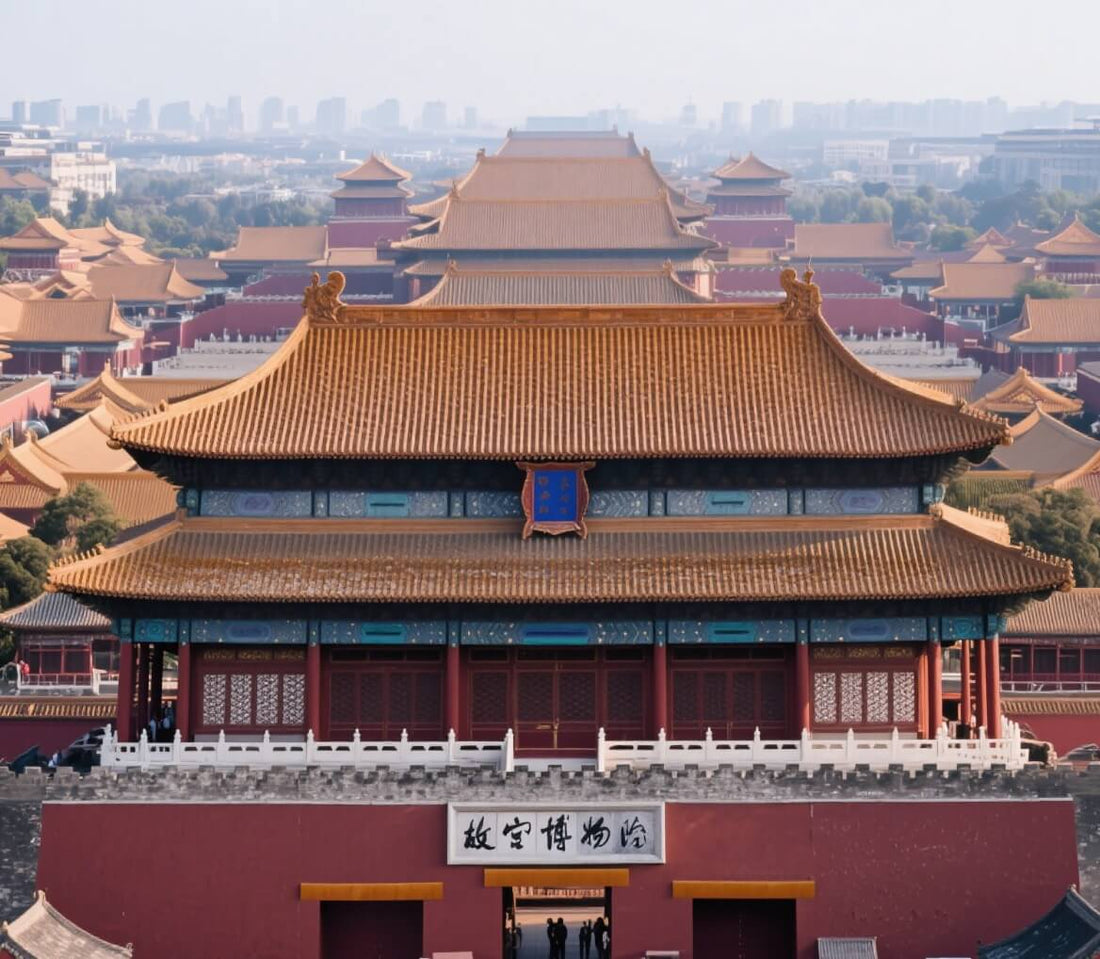
Local Recommendations: Top Places to Visit in Beijing During Your Trip to China
Share
Hello everyone! I'm alobei! If this is your first trip to China, I recommend Beijing as your first stop. Because Beijing, as the cultural and political center of China, is the ideal place to start your journey.
I have sorted out the must-see attractions in Beijing, I hope it will be helpful for your trip!
6 Best Places to Travel to Beijing
- The Great Wall: A Monument of Ancient Wisdom
- The Forbidden City: The Imperial Heart of Beijing
- The Lama Temple: A Spiritual Sanctuary in the City
- The Summer Palace: A Large Royal Garden
- Shichahai: The "Water Town" of Beijing
- Tiananmen Square: The Heart of Beijing and a National Symbol
The Great Wall
Here in Beijing, one of your first must-see landmarks is the Great Wall of China—specifically the Badaling section.

This is the most iconic and well-preserved part of the Ming Dynasty Wall, famous for its steep and majestic terrain. It showcases the incredible ingenuity of ancient Chinese military defense systems. Stretching over 20,000 kilometers, built from billions of bricks, the Wall winds across mountains like a giant dragon.

The origins of the Great Wall date back more than 2,000 years, to the Spring and Autumn and Warring States periods. While you're there, don’t forget to take a photo with the famous inscription: "He who has never been to the Great Wall is not a true hero." It's your badge of honor—proof that you're truly brave and strong.
The Forbidden City
Our second must-visit spot is the heart of Beijing — the Forbidden City, also known as the Imperial Palace.

This magnificent complex was home to 24 emperors during the Ming and Qing dynasties. It’s not only a symbol of imperial China, but also the largest and best-preserved wooden architectural complex in the world. Trust me — you’ll be amazed and deeply impressed by its grand scale and majestic design.
Here, you can even try on traditional emperor costumes to get a sense of royal life in ancient China.

Don’t miss the view from the top of Jingshan Park, just across the street. From there, you can overlook the entire Forbidden City — rows of golden roofs and red walls stretching out before you. It truly feels like stepping back in time.
The Lama Temple
Our third must-visit site is the Lama Temple, or Yonghe Temple.

Originally built in 1694 during the reign of Emperor Kangxi in the Qing Dynasty, it is the largest Tibetan Buddhist temple in Beijing. What makes it especially unique is its architectural style — a beautiful blend of Han, Manchu, Mongolian, and Tibetan elements.

Locals often say, "Men pray at Yonghe Temple, women pray at Hongluo Temple," a tradition that has lasted for hundreds of years. Today, many foreign visitors also come here to make wishes and pray for good fortune.
The Summer Palace: A Large Royal Garden
Next, we have the Summer Palace, a large royal garden located in the western suburbs of Beijing.
It was built during the Qing Dynasty and is not only a masterpiece of Chinese classical garden art but also a UNESCO World Heritage site.

One of the highlights of the Summer Palace is the 728-meter-long Long Corridor. This corridor is not only an important pathway connecting various scenic spots but is also famous for its 14,000-plus paintings on the ceiling. These paintings depict over 5,000 years of Chinese history, culture, myths, and folklore. It has earned the nickname "the World's Longest Gallery."

Shichahai: The "Water Town" of Beijing
Shichahai, consisting of the West Lake, Back Lake, and Front Lake, is a symbol of Beijing's "water town" culture, with traditional hutongs and old courtyards surrounding the area. Since the Qing Dynasty, it has been a popular summer retreat, preserving the old Beijing atmosphere.

With a long history, Shichahai is known as the “Water Town of Beijing.” During the Ming and Qing Dynasties, as the area became home to numerous royal palaces and temples, it gradually became a gathering place for nobles and intellectuals.
This area offers not only beautiful natural scenery but also a wealth of cultural heritage. Historical sites such as Prince Gong’s Mansion and the Former Residence of Song Qingling are located nearby, and the surrounding attractions are densely packed.

Here, you can truly experience the lively atmosphere of old Beijing! You can even enjoy a traditional rickshaw ride, a classic local experience.
Tiananmen Square: The Heart of Beijing and a National Symbol
Located in the very center of Beijing, Tiananmen (also known as the Gate of Heavenly Peace) is one of the most iconic landmarks in the city, and a powerful symbol of the People's Republic of China.

Tiananmen has witnessed many significant historical events. Most notably, on October 1st, 1949, Chairman Mao Zedong stood here and proclaimed the founding of the Central People’s Government of the People’s Republic of China, raising the very first five-star red flag.
Today, the national flag-raising ceremony held at sunrise attracts large crowds of tourists and locals every day. For first-time visitors to Beijing, watching the flag-raising ceremony is a truly unforgettable experience and a must-see moment.

Come to a Conclusion
Beijing is a city where ancient history and modern life exist side by side. From the majestic Great Wall to the peaceful waters of Shichahai, each landmark tells a unique story of China’s rich cultural heritage.
Whether you're exploring royal gardens, standing in the footsteps of emperors, or witnessing the national flag rise at dawn, Beijing offers unforgettable moments for every traveler. So pack your curiosity and come discover the heart and soul of China in its vibrant capital city.
